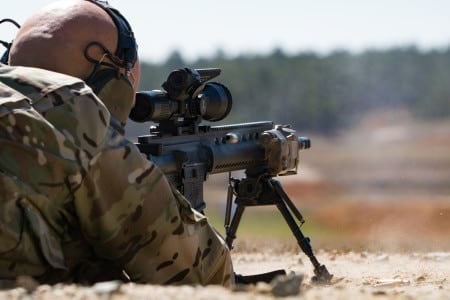Special operations forces numbers are higher than they have ever been, but leaders in that community want Congress to approve their highest budget request ever made to increase the force by more than 1,000 troops.
The special operations forces, which include Army Special Forces and Rangers, Navy SEALs, Marine Raiders and Air Force Special Tactics Operators and others, are being strained to their breaking point, officials have said publicly over the past year.
Secretary of Defense Jim Mattis has said that conventional forces would have to assume some of those duties to supplement the missions special operations troops perform across more than 80 countries on an ongoing basis.
Owen West, the newly appointed assistant defense secretary for special operations/low-intensity conflict, and Army Gen. Raymond Thomas, commander of U.S. Special Operations Command, told the House Armed Services Committee subcommittee on emerging threats last week that SOCOM needs to push its numbers to more than 71,000.
The force stands at 70,000 now, nearly double the 33,000 who called SOCOM home before the 9/11 attacks.
In President Donald Trump’s first year in office, SOCOM forces deployed to 149 countries, an increase from the previous year that saw deployments to 138 countries.
Thomas noted that over the past 10 months, 20 special operations personnel had died and another 144 were wounded in service.
The general told congressional leaders last year that the operations tempo was “unsustainable” for the force.

“We are not a panacea,” Thomas said. “We are not the ultimate solution to every problem, and you will not hear that coming from us.”
The increase in manpower and funding, which includes a budget request of $13.6 billion, or a 10 percent increase over last year’s request, isn’t simply to continue the counter-terrorism operations for which the force is known.
It is to catch up capabilities for fighting near-peer threats, falling in line with the revamped and recently released National Defense Strategy.
“The NDS calls for a new era, where we compete in what Secretary Mattis calls ‘the contact lair,’ the daily clash of national will that occurs short of armed conflict, where your special operations forces are today building relationships and reducing the enemy,” West said.
In fiscal 2017, SOCOM’s budget was $11.8 billion; last year it was $12.6 billion, Thomas said.
At first glance, the SOCOM request looks to shortchange research and development, with a decrease in those funding requests for the second year in a row.
That change prompted questions from committee members.
RELATED

“I am somewhat disappointed that SOCOM’s budget request decreases research and development funding for a second year in a row,” said Rep. Elise Stefanik R-New York. “I look forward to hearing the rationale for this, and taking any necessary steps to ensure we do not lose our technological and battlefield advantages.”
Thomas assured the representatives that the special operations community remains a key “platform” for testing and prototyping new equipment, but they have been able, as an organization, to partner with the traditional services’ R&D efforts to save money and better focus their spending on manpower and current missions.
Both military officials and subcommittee members were quick to note that the global work conducted by special operations troops comprises only 2 percent of the overall defense budget.
Todd South has written about crime, courts, government and the military for multiple publications since 2004 and was named a 2014 Pulitzer finalist for a co-written project on witness intimidation. Todd is a Marine veteran of the Iraq War.




